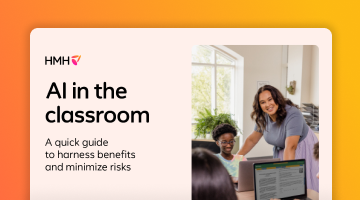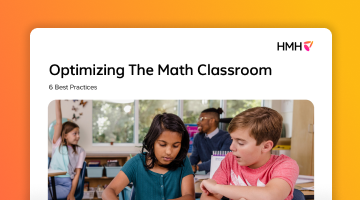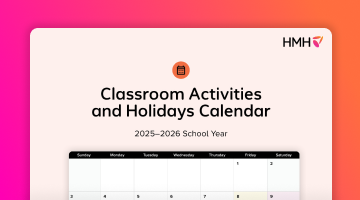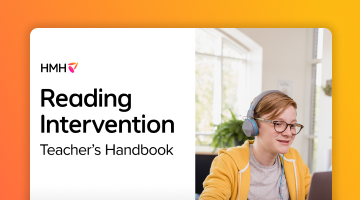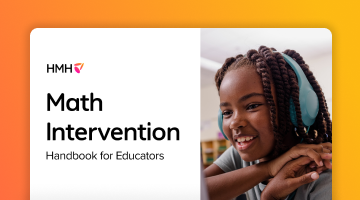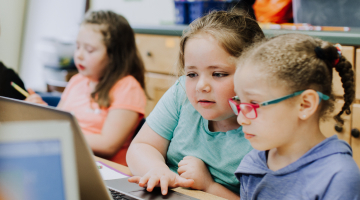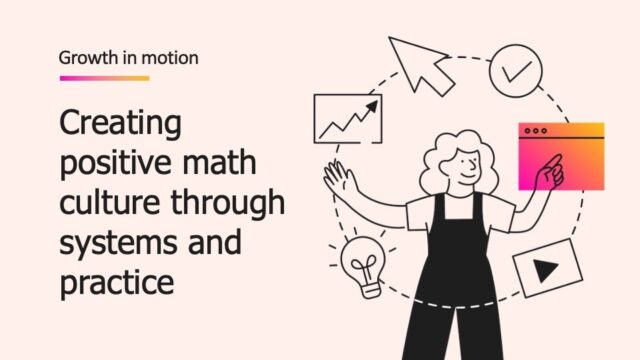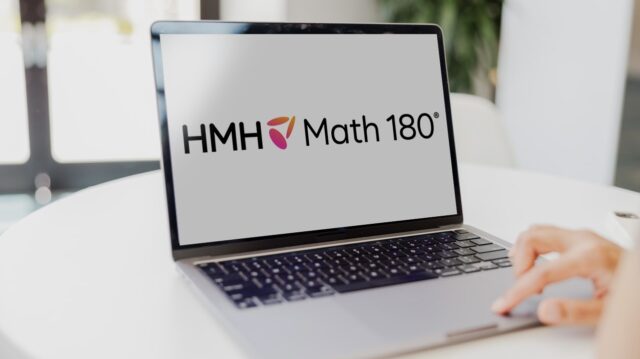
No two readers are exactly alike. Every student brings a mix of different needs, interests, and abilities to the classroom. Teachers can help students develop reading skills most effectively by varying instructional strategies. This blog post explores differentiated reading instruction strategies you can use to drive better learning outcomes.
What is differentiated reading instruction?
In Carol Ann Tomlinson’s landmark book on differentiating instruction, she writes, “At its most basic level, differentiating instruction means ‘shaking up’ what goes on in the classroom so that students have multiple options for taking in information, making sense of ideas, and expressing what they learn.”
Teachers can “shake up” what happens in their classroom in many ways, such as by modifying the lesson content (what students learn), process (how students learn), product (how students show what they have learned), and learning environment (the physical setup of the classroom). In reading, differentiated instruction can look like grouping students by a specific area of reading in which they need further development for more targeted instruction. In fact, small-group instruction is one of the most effective ways to differentiate instruction.
Using small groups to differentiate reading instruction
Monica Padgham, acting vice principal of McCammon Elementary School in Chilliwack, British Columbia, Canada, leverages small-group instruction for differentiation. “When I think of differentiated reading instruction, my go-to method is small-group, targeted instruction,” says Padgham, “By this, I mean teachers creating small groups for purposeful instruction in three areas of reading: fluency, comprehension, and word work.”
At Padgham’s school, teachers assess their students to determine what each child needs in their overall literacy development. They then sort students into temporary small groups for targeted reading instruction in specific areas. Teachers continue to assess students’ reading needs and regroup accordingly.
“I’ve been at this for 20 years and believe this gives you the most bang for your buck,” she says. “If you teach only to the whole class, you’ll lose the kids who aren’t ready as well as the kids who already understand. It’s more effective to address what they need in small groups.”
While teachers are doing small-group reading instruction, the other students are typically working on choice boards, writing letters, reading, or doing word work.
The key to all of this, says Padgham, is to plan ahead of time. “Start with the whole class and assign the daily tasks. Make sure you keep track of the choices students make so that you can let their parents and caregivers know which things they like best, such as being read to or doing crossword puzzles.” Keeping track of student choices will also let you know if students need to be encouraged to try a broader range of activities.
How to differentiate reading instruction
A Guide to Whole-Group Differentiated Instruction explains that you can differentiate instruction by adjusting your content, process, product, and learning environment. Here are some options to consider:
- Content: Differentiating by content means to differentiate what it is that students are learning. You might provide options for how students can model part of a topic, or students might have options for what content to learn. There are many ways to think about differentiating content, for example, activating prior knowledge, compacting or expanding curriculum, providing a variety of materials, or varying presentation styles. For students not yet fluent in reading grade-level texts, small-group differentiation should help students access the grade-level materials by preparing them before whole-group lessons for the vocabulary, content, and text structure they will encounter.
- Process: Differentiating by process means to differentiate how students learn to ensure they all achieve the same learning goals. Examples include pre-teaching, using graphic organizers, teacher prompting, tiered questioning, learning centers, the jigsaw method, or manipulatives. Teachers might also provide support for some students while allowing others to advance beyond the learning goal.
- Product: Differentiating by product means to differentiate how students choose to demonstrate what they have learned. There are plenty of ways teachers can ask students to show mastery of a skill or concept after a lesson, such as by using tiered activities/products, choice boards, or flexible assessments.
- Learning environment: Differentiating by the learning environment means to differentiate the setup of the classroom and physical space. You might set up the classroom based on instructional needs, small-group learning, or whole-class discussion. Examples include using flexible seating, offering a new location for learning, co-teaching strategies, or implementing technology.
Let’s dive deeper into some of these strategies.
Examples of differentiated instruction in reading
Differentiation doesn’t have to be a full-scale overhaul to be effective. You could ask students to write a song, create a storyboard, or do a video book report to demonstrate comprehension. You could use technology, such as HMH Personalized Path, which offers adaptive practice and personalized intervention, or Writable, which helps students become stronger writers. Or you could simply allow your students to pick their own reading material. Here are some examples of differentiated reading strategies you can try.
1. Choice boards
Choice boards for students list various activities for students to work on. Start with your end goal: what do students need to accomplish? You can provide up to 12 choices on a typical board, including independent and group work, activities using technology, or no-tech activities. You can also add some extra fun for your students by developing a game board of learning options.
To get started, try out these customizable PowerPoint templates available in HMH Into Literature for project-based learning options. You can customize these slides with project choices and instructions to create a digital choice board of your very own.

2. Learning centers
Set up literacy activities around the room and let students rotate through them. Each station should use a different method to teach a skill or concept, such as reading an article, watching a video, listening to an audiobook, or acting out a scene. To be effective, each station should have clear activities and takeaways. To help students process what they’ve learned, have a class discussion or assign a reflective activity after they’ve rotated through all the stations.
3. Task cards
Similar to learning centers, task cards provide a range of activities for students. Start by creating cards with a single question or task that targets a specific skill, learning standard, or subject area. You can use the cards for whole-class work or place them on your desk for students to use individually, with a partner, or in a small group. If you have an answer key, students can check their own work. Students can complete task cards in class or for homework. One way to differentiate task cards strategically is to hand out specific cards to students who need more work on that task.
4. Tiered assignments
Vary the tasks based on student reading ability in a particular area. Let students write a paper, do a TED-style talk or other presentation, or record a group discussion. Keep in mind that with the appropriate support, every learner can, and should, get the opportunity to try any of these tasks. Differentiated support may include meeting with a small group of students to practice strategies that build understanding.
5. Vary discussion style
Rather than just having students answer specific questions that you ask, have students ask questions to each other. Challenge them to talk about what they liked or disliked and why. Ask a student to lead the discussion or assign students to bring questions to class. Take a vote on what a character might do next or hold a debate on a character’s guilt or innocence. The point is to introduce various ways to discuss the materials your class reads.
When you differentiate reading instruction to meet the various learning needs of your students, the work becomes more meaningful and engaging. By incorporating various learning strategies, teachers can help students stay motivated. Because it is flexible, differentiated instruction can maximize individual growth. But most of all, when we differentiate, we deliver student-centered instruction. Students feel seen and heard, and that can make all the difference.
***
Streamline feedback and grow great writers with Writable. Get access to more than 1,000 assignments and prompts to scaffold student practice, increase engagement, and connect writing directly to your daily instruction. Request a free demo here.
Build confident readers and writers with our literacy curriculum.
This blog, originally published in 2022, has been updated for 2025.
Get the guide "4 Ways to Support Diverse Learners in the Classroom" today.

